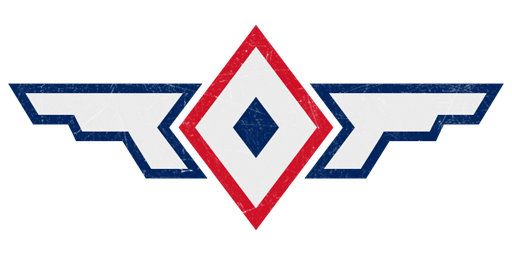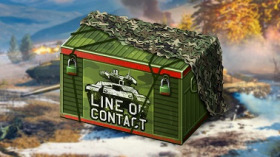
- For PC
- For MAC
- For Linux
- OS: Windows 10 (64 bit)
- Processor: Dual-Core 2.2 GHz
- Memory: 4GB
- Video Card: DirectX 11 level video card: AMD Radeon 77XX / NVIDIA GeForce GTX 660. The minimum supported resolution for the game is 720p.
- Network: Broadband Internet connection
- Hard Drive: 23.1 GB (Minimal client)
- OS: Windows 10/11 (64 bit)
- Processor: Intel Core i5 or Ryzen 5 3600 and better
- Memory: 16 GB and more
- Video Card: DirectX 11 level video card or higher and drivers: Nvidia GeForce 1060 and higher, Radeon RX 570 and higher
- Network: Broadband Internet connection
- Hard Drive: 75.9 GB (Full client)
- OS: Mac OS Big Sur 11.0 or newer
- Processor: Core i5, minimum 2.2GHz (Intel Xeon is not supported)
- Memory: 6 GB
- Video Card: Intel Iris Pro 5200 (Mac), or analog from AMD/Nvidia for Mac. Minimum supported resolution for the game is 720p with Metal support.
- Network: Broadband Internet connection
- Hard Drive: 22.1 GB (Minimal client)
- OS: Mac OS Big Sur 11.0 or newer
- Processor: Core i7 (Intel Xeon is not supported)
- Memory: 8 GB
- Video Card: Radeon Vega II or higher with Metal support.
- Network: Broadband Internet connection
- Hard Drive: 62.2 GB (Full client)
- OS: Most modern 64bit Linux distributions
- Processor: Dual-Core 2.4 GHz
- Memory: 4 GB
- Video Card: NVIDIA 660 with latest proprietary drivers (not older than 6 months) / similar AMD with latest proprietary drivers (not older than 6 months; the minimum supported resolution for the game is 720p) with Vulkan support.
- Network: Broadband Internet connection
- Hard Drive: 22.1 GB (Minimal client)
- OS: Ubuntu 20.04 64bit
- Processor: Intel Core i7
- Memory: 16 GB
- Video Card: NVIDIA 1060 with latest proprietary drivers (not older than 6 months) / similar AMD (Radeon RX 570) with latest proprietary drivers (not older than 6 months) with Vulkan support.
- Network: Broadband Internet connection
- Hard Drive: 62.2 GB (Full client)
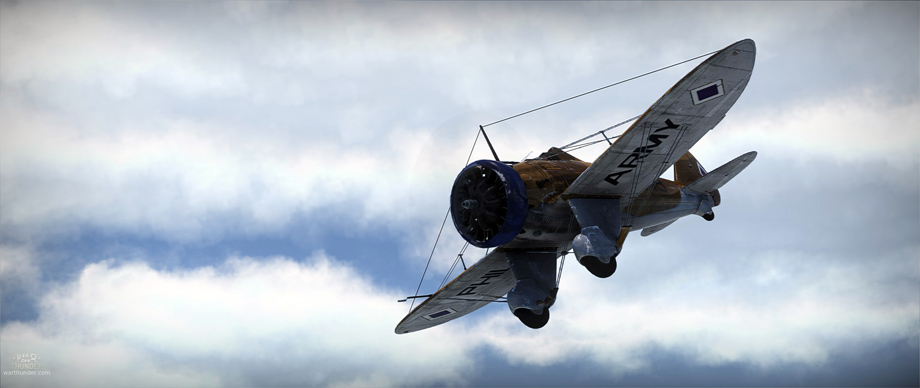
P-26 Philippine Air Force,
camouflage created by BaronDonGiggles | download here
The history of the Philippine Air Force started in March 1937. It was then that the Philippine National Guard was created via the Militia Act 2715.
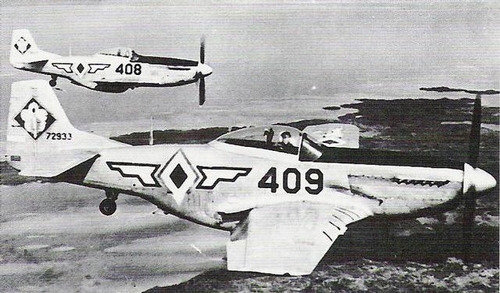 |
|
P-51 Mustangs of the Philippine Air Force circa 1950's |
Outside of ground troops, the new formation was to have an air detachment, consisting of 15 officers and 135 soldiers. The newly formed units were too late to participate in World War I, however the end of the war meant that acquisition of surplus aircraft was possible. Still, there were no trained pilots to fly them. The Philippine government enlisted the help of the Curtiss School of Aviation to train the first batch of pilots. The training base was set in Camp Claudio, and in 1920 the first Filipino pilot - Lt. Leoncio Malinao - took to the skies in the first solo flight in the history of the Philippine military. The training of the first cadets ended in December 1920 - 25 of the 33 participants of the training course earned their wings and became first officially trained Filipino pilots. The main problem now, though, was a lack of proper equipment, especially airplanes.
This situation changed in 1935, when the Philippine Constabulary Air Corps was established. A year later, its name was changed to the Philippine Army Air Corps (PAAC). Three Sterman 73L-3 trainer aircraft formed the beginnings of the new force. By the time of the Japanese invasion in December 1941, the force grew to 54 aircraft, including fighters (mainly Boeing P-26A “Peashooters”), as well as light bombers and trainers. The Japanese onslaught was relentless, and the obsolete Peashooters were no match for japanese “Zeroes”. Regardless, the pilots of the PAAC fought valiantly against the odds and even scored some kills against the Japanese. The downfall of Corregidor in May 1942 marked the end of the Japanese conquest of the Philippines. The PAAC dissolved.
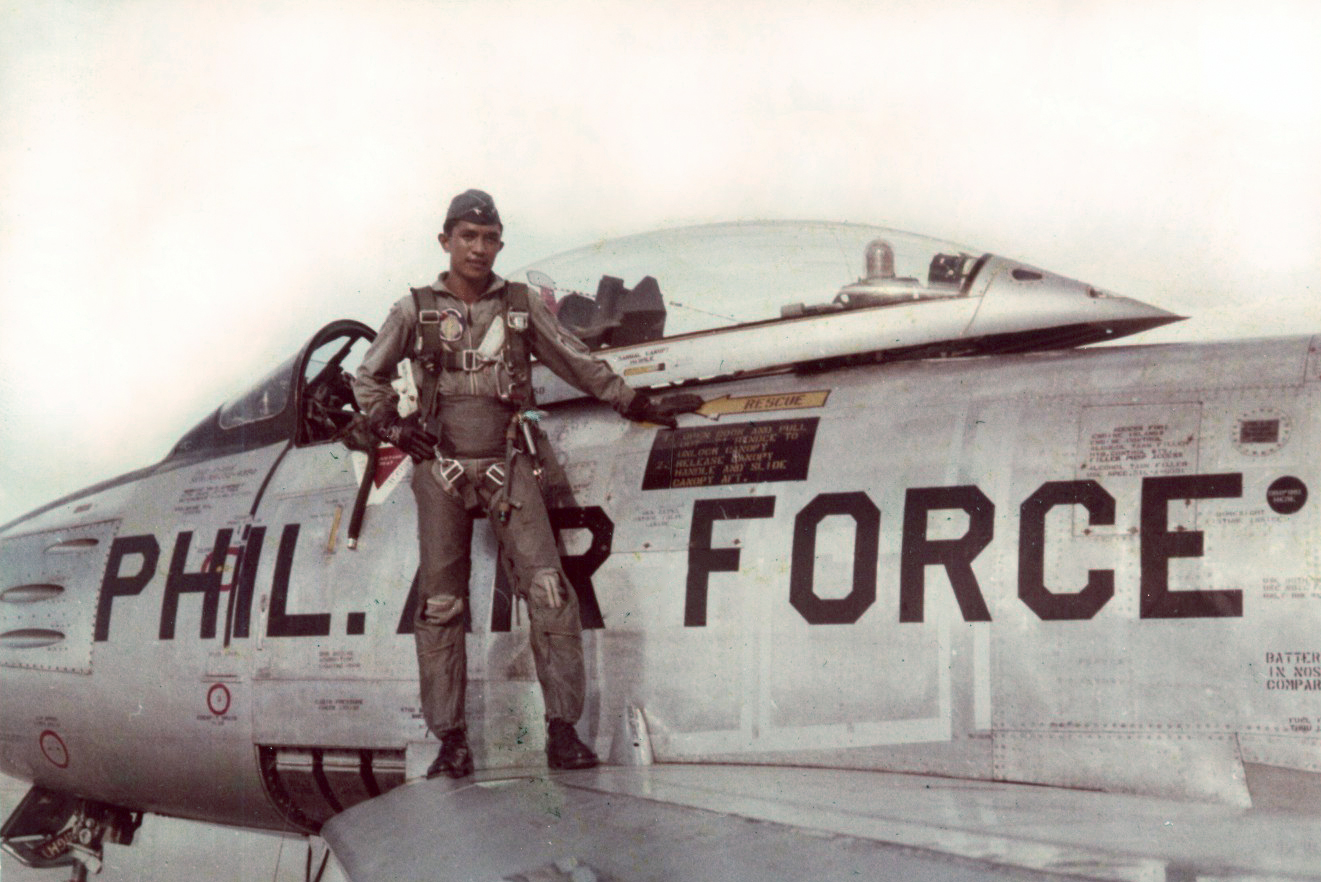 |
|
Captain Antonio Bautista, striding his F-86 Sabre Jet Fighter |
After the liberation of the Philippines from Japanese rule in 1945, the new government began to reorganize the air forces. One step of that plan was the Executive Order 94, which separated the Air Force from the Army, making it a fully separate entity with its own chain of command. Another repercussion of that order was the creation of the Philippine Air Patrol. The new force was quickly supplied with new aircraft - mainly the American P-51 Mustangs. These aircraft were then used in combat in close-air support sorties against Kamlon and HUK rebels in the 50s. The PAF moved into the jet age in 1955, with the acquisition of Lockheed T-33 trainer aircraft and F-86 Sabre fighters in 1956. The Filipino pilots then took part in the UN peacekeeping mission in Congo in 1963, with sorties aimed against secessionist rebels. In the 1970s, the Air Force was called upon again - this time in combat against both the Moro National Liberation Front and the New People’s Army.
Currently, the main aircraft used by the PAF are the Rockwell OV-10 Bronco and the Marchetti S.211 trainer. The situation is about to change, however, as the deliveries of the South Korean KAI FA-50 light fighter are to commence. Other machines in use by the Philippine Air Force include the C-130 transport plane or the W-3 Sokół helicopter.
Author: Adam “BONKERS” Lisiewicz
In one of the following Updates, we will include roundel of the Philippines Air Force
The War Thunder Team
